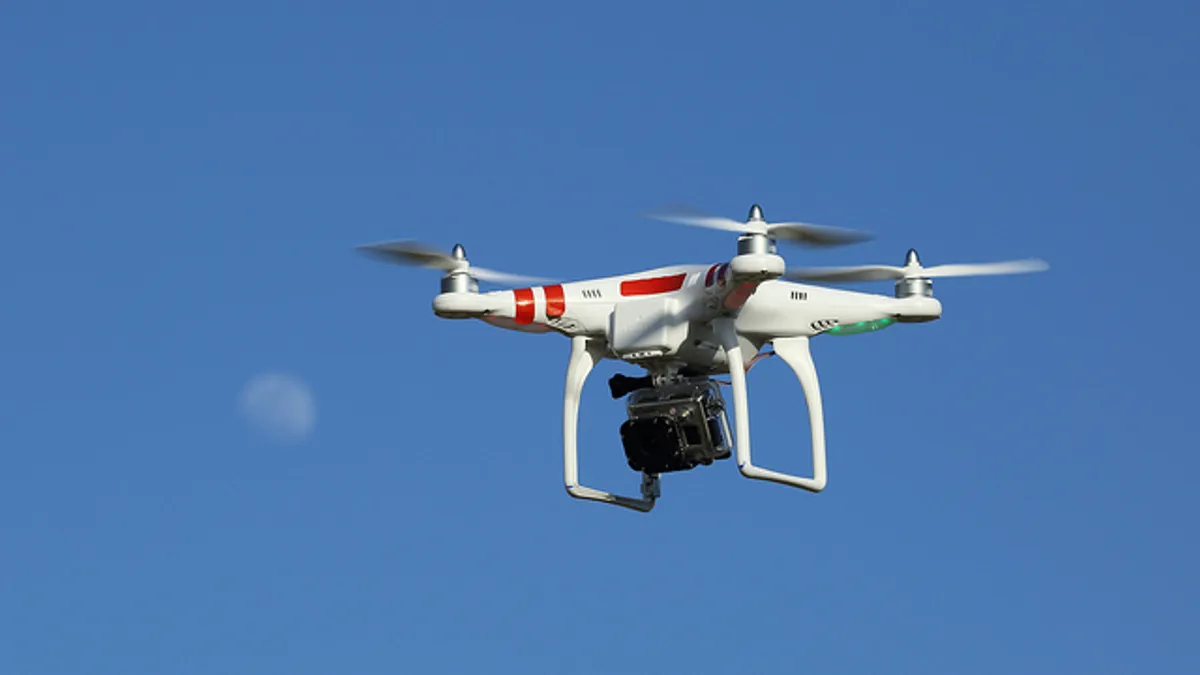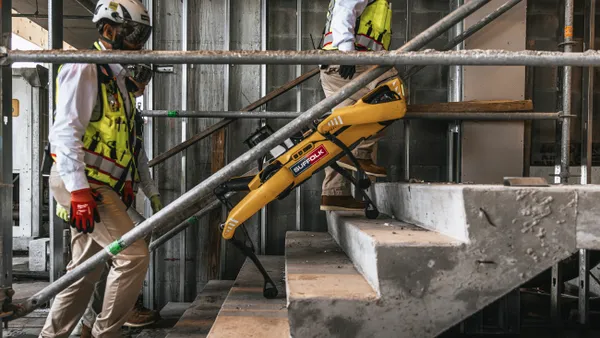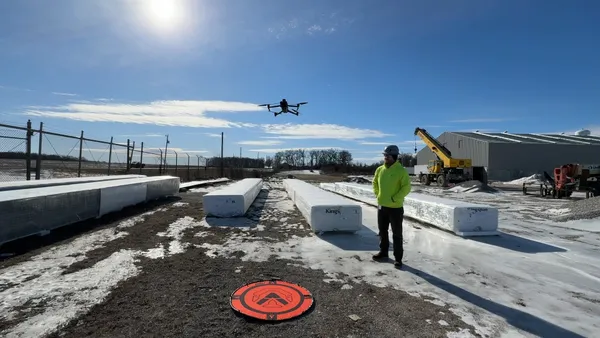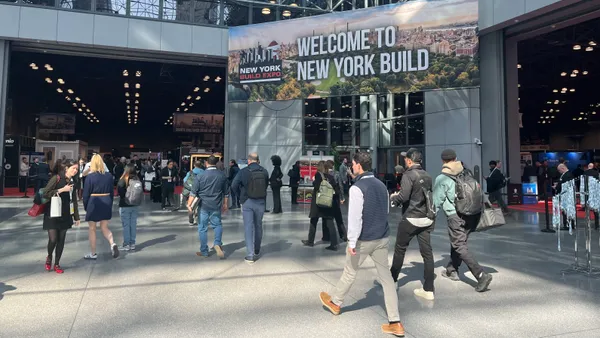Dive Brief:
- Researchers at Imperial College, University College London, and the University of Bath have stepped up their visions of the role 3-D printing can play in the creation of disaster housing by adding drones to the equation — a method called aerial additive building manufacturing (ABM), according to 3DPrint.com.
- Researchers said they hope to be able to use drones to gather site information, feed the collected data into building information modeling software, design a structure, and then dispatch a 3-D-printing-capable swarm of drones with the materials on board to build it.
- The project team has received a $3.3 million grant for a four-year study of the method and is collaborating with companies like Skanska, Ultimaker, BuroHappold, Dyson and BRE to bring the idea to fruition, according to 3DPrint.com.
Dive Insight:
The research team’s objectives in the study are to develop:
- A 3-D-printing-capable aerial ABM drone
- Lightweight 3-D printable materials
- The system framework necessary to gather and share data, coordinate the drones to work safely on a construction site, and optimize the use of construction materials
Researchers said that it's possible the aerial ABM technology could be used not just for emergency construction, but as a new method with the potential to change all types of building.
This is not the first 3-D printing project with the goal of creating disaster or emergency housing. Wolf D. Prix said while working on the construction of his Museum of Contemporary Art and Planning Exhibition project in Shenzhen, China, that the refugee-housing crisis could be solved economically using robots to assemble 3-D-printed prefabricated parts.
Additionally, Russian engineer Nikita Chen-yun-tai invented the portable Apis Cor 3-D printer, which can create 1,000 square feet of structure a day and also has been suggested as a way to build temporary emergency shelter.
However, this is the first 3-D option that proposes that drones build onsite without having to bring in a large printer or prefabricated materials.














